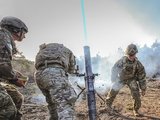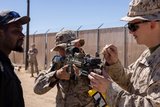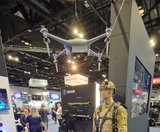Cubic tailors mortar simulator for the US Army
The company’s mortar trainer received improvements based on soldier’s feedback.
Turkish Aerospace Industries’ (TAI’s) HÜRKUŞ-B aircraft has performed its first flight test in Ankara, Turkey.
The basic trainer aircraft is being developed for the Turkish armed forces. TAI is under contract to deliver 15 aircraft with entry into service slated for mid-2018.
HÜRKUŞ-B will undergo around 90 flight hours of training to test engine, avionics, stability and flight test execution.
Temel Kotil, president and CEO, TAI, said: ‘HÜRKUŞ-B is 100kg lighter, faster, more modern and stronger than HÜRKUŞ-A. This version has a more stable and comprehensive design.’

The company’s mortar trainer received improvements based on soldier’s feedback.

The company will operate in two new locations in the coming years to better support US services.

This type of tool provides more realistic training easing the incorporation of new scenarios that accurately represent the threats of the battlefield.

The Engineering Corps has been conducting individual instruction using FLAIM Systems’ Sweeper and should start collective deployments in 2025.

The next-generation platform is motion-compatible and can be used in OTW and NVG applications.

The system can be used to prepare soldiers for both drone offensive operations and CUAS missions.